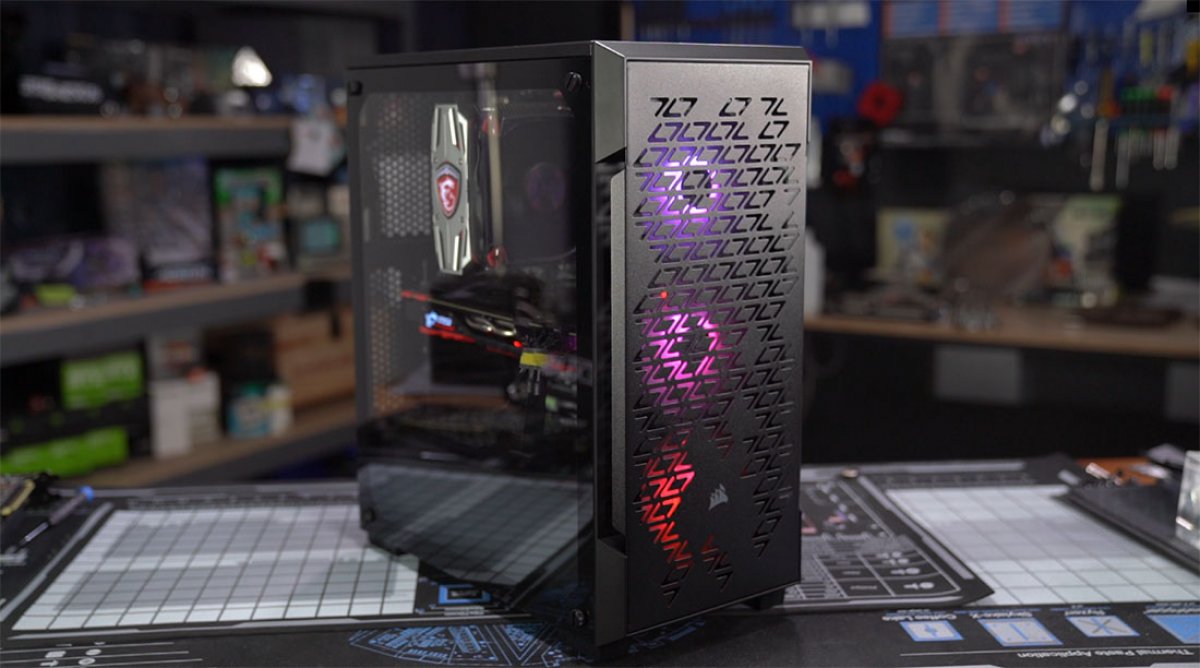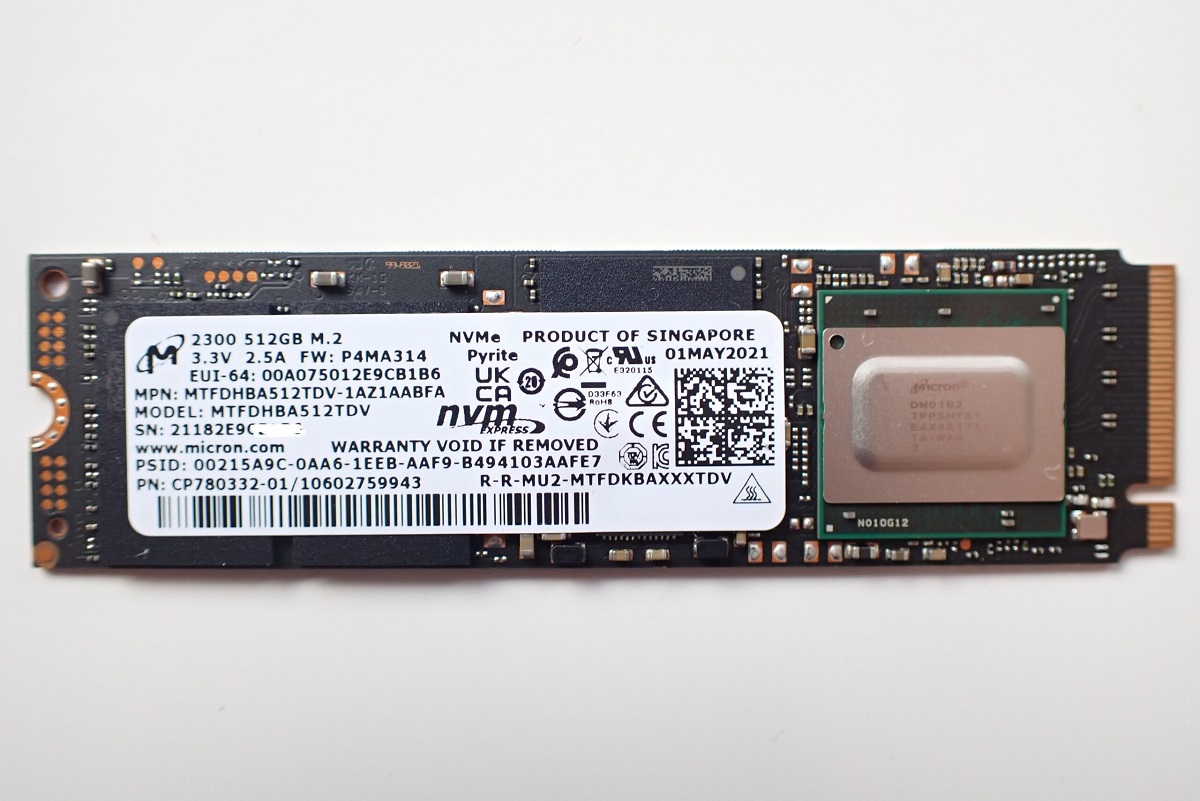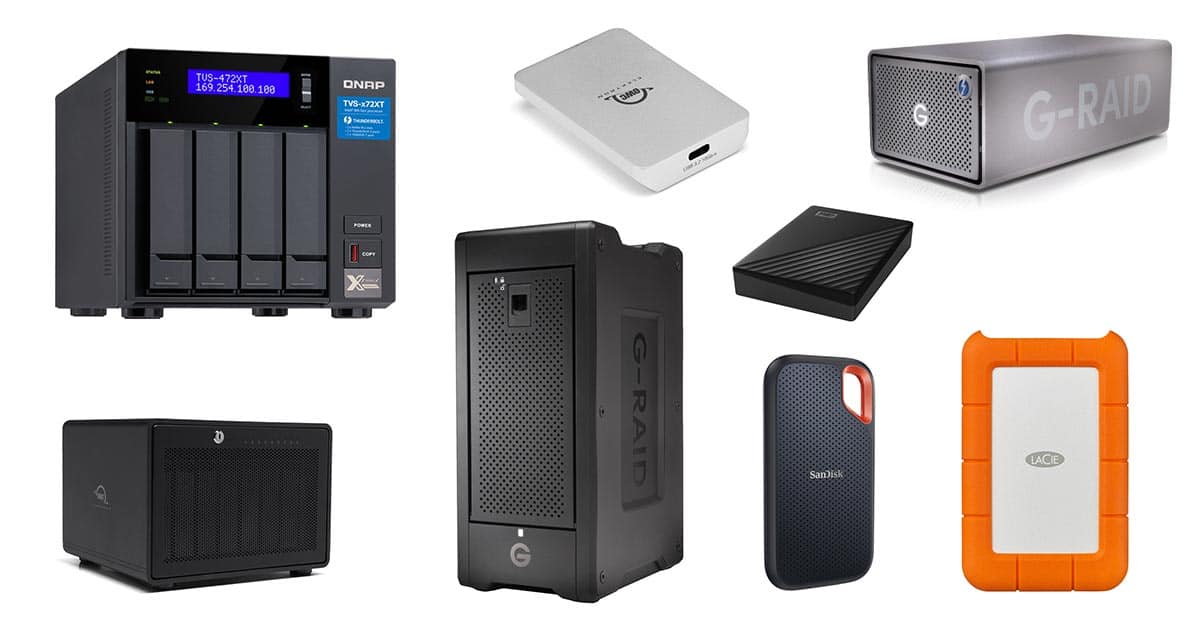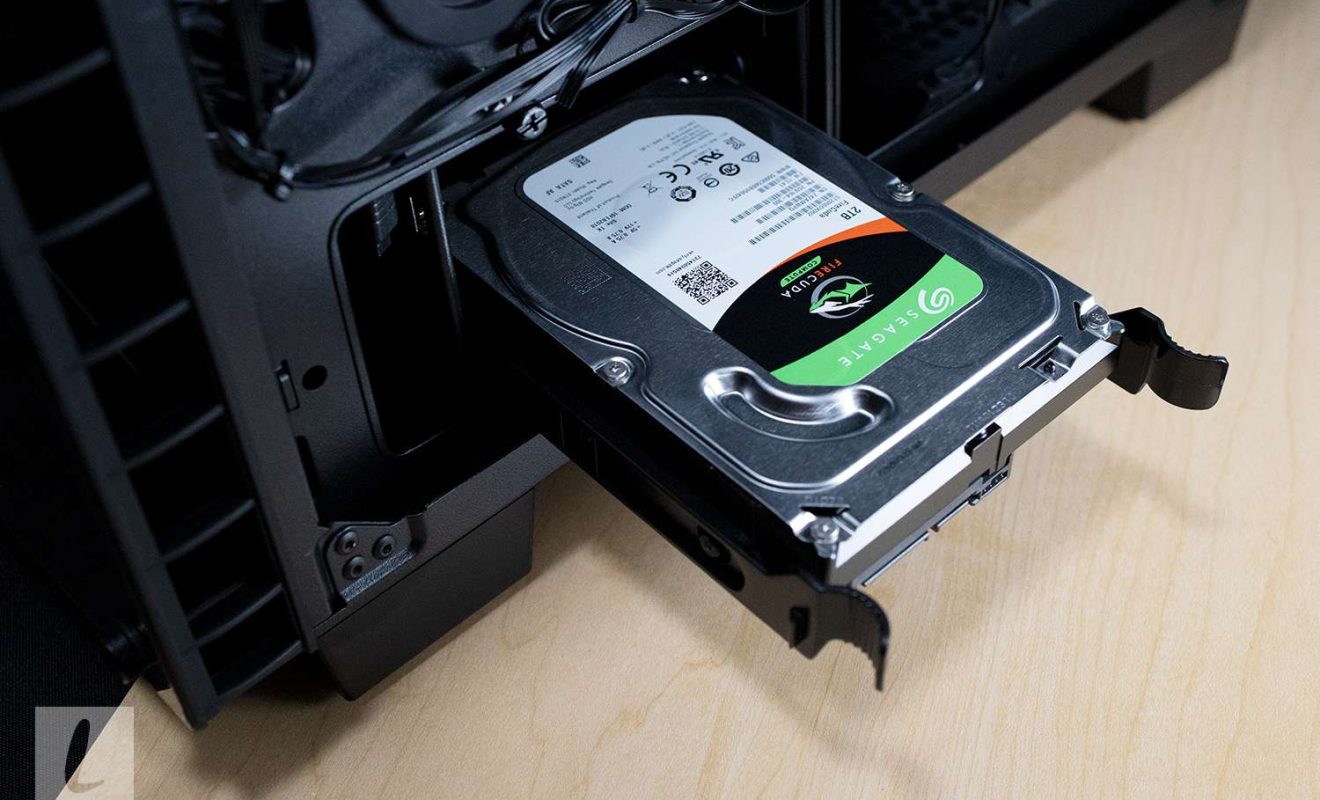Signs that your PC case may be bad
Your PC case is an essential component of your computer setup, responsible for housing and protecting the internal hardware. Over time, the case may start to deteriorate or become inadequate for your needs. Here are some signs that indicate your PC case may be bad:
- Overheating: If your computer is constantly overheating, it could be a sign of a problematic PC case. Inefficient airflow or inadequate cooling mechanisms can cause an excessive buildup of heat, leading to performance issues and potential damage to your components.
- Noise and vibrations: Excessive noise or vibrations coming from your PC case could indicate loose or faulty components, such as fans, hard drives, or mounting screws. While some noise is normal, persistent and loud noises can be a warning sign of a case that needs attention.
- Poor cable management: If your PC case lacks proper cable management features, it can result in a messy and tangled web of cables inside. This can obstruct airflow, hinder maintenance, and potentially lead to performance issues or component damage.
- Limited expansion options: If you find yourself needing to upgrade or add new components frequently, but your PC case lacks the necessary expansion slots or space, it may be time to consider replacing your case. A lack of expansion options can limit the potential for future upgrades.
- Damaged or cracked case: Obvious signs of physical damage, such as cracks in the case or broken panels, are clear indicators that your PC case is in bad shape. Physical damage compromises the structural integrity of the case and can compromise the safety of your components.
If you notice one or more of these signs, it’s important to address them promptly to prevent further damage and ensure the longevity of your computer system. Continuing to use a faulty or inadequate PC case can result in reduced performance, increased risk of hardware failure, and even potential data loss. Considerations before replacing your PC case will help guide your decision-making process and ensure a seamless transition to a new case.
Considerations before replacing your PC case
Before rushing to replace your PC case, there are a few important factors to consider. Taking the time to evaluate these factors will help ensure you choose the right case for your needs and make the transition as smooth as possible.
- Compatibility: Ensure that the new case is compatible with your motherboard form factor, GPU length, CPU cooler height, and other components. Check the specifications of the case and compare them with your existing hardware to avoid any compatibility issues.
- Airflow and cooling: Assess the airflow and cooling capabilities of the new case. Look for features such as intake and exhaust fans, dust filters, and ample space for cable management. Proper airflow is crucial for maintaining optimal temperatures and preventing thermal throttling.
- Expansion options: Consider the expansion options available in the new case. If you anticipate adding more storage drives, expansion cards, or liquid cooling systems in the future, choose a case that offers sufficient expansion slots, drive bays, and radiator support.
- Cable management: Evaluate the cable management options in the new case. Look for features such as routing holes, rubber grommets, and ample space behind the motherboard tray to hide and organize cables. Proper cable management not only enhances airflow but also makes maintenance easier.
- Aesthetics and design: Consider the visual appeal and design of the new case. Choose a case that matches your personal style and fits seamlessly into your workspace. Additionally, look for features such as tempered glass panels or RGB lighting if you want to showcase your internal components.
- Budget: Set a budget for your new PC case and stick to it. While it’s tempting to invest in a high-end case with all the bells and whistles, make sure it aligns with your needs and budget. Remember that a more expensive case doesn’t always guarantee better performance.
By considering these factors before replacing your PC case, you can make an informed decision that meets your requirements and ensures a smooth transition. Taking the time to do your research and evaluate your options will help you choose a case that not only addresses the issues you have with your current case but also provides a solid foundation for your computer system.
How to determine if your PC case is the problem
If you’re experiencing issues with your computer, it’s essential to determine whether your PC case is the root of the problem. Here are some steps to help you identify if your PC case is causing the issues:
- Inspect for physical damage: Carefully examine your PC case for any signs of physical damage. Look for cracks, broken panels, or loose screws. Physical damage can compromise the integrity of the case and potentially cause issues with the internal components.
- Monitor temperatures: Keep an eye on the temperatures of your CPU and GPU while your computer is under load. If your temperatures are consistently high and reaching unsafe levels, it could indicate poor airflow or inadequate cooling in your PC case.
- Check for dust accumulation: Excessive dust buildup can hinder airflow and lead to overheating issues. Open up your PC case and inspect for dust accumulation on fans, heat sinks, and filters. If you notice thick layers of dust, it’s a strong indicator that your case is not effectively filtering out dust particles.
- Listen for abnormal noises: Pay attention to any abnormal noises coming from your PC case. Grinding, rattling, or buzzing sounds can indicate loose or faulty components. Fans that are failing or obstructed can also create unusual noises.
- Assess cable management: Take a look at the cable management inside your PC case. If cables are tangled, obstructing airflow, or causing strain on components, it can contribute to performance issues. Consider rearranging cables and using cable management solutions to improve airflow and prevent any potential damage.
- Perform stress tests: Run stress tests or benchmarks on your computer to see if your components are performing as expected. If you notice significant performance drops or system instability during these tests, it could be a sign that your case is not adequately supporting your components.
- Try a different case: If you’ve gone through the above steps and are still unsure if your PC case is the problem, consider temporarily swapping your components into another case. If the issues persist or worsen in the new case, it’s likely that the problem lies elsewhere.
By following these steps, you can gather valuable information to determine if your PC case is causing the issues you’re experiencing. If you find that your case is indeed the problem, it may be time to consider troubleshooting tips or replacing your PC case to resolve the underlying issues.
Troubleshooting tips for common PC case issues
When faced with common PC case issues, there are several troubleshooting tips you can try before considering replacing your case. Here are some solutions to common problems:
- Overheating: Improve airflow by cleaning dust filters, ensuring proper cable management, and adding additional fans if necessary. Consider reapplying thermal paste to your CPU and GPU to ensure optimal heat transfer.
- Noise and vibrations: Tighten any loose screws, ensure fans are properly installed and balanced, and consider using rubber dampeners to reduce vibrations. If a fan is causing excessive noise, consider replacing it with a quieter model.
- Poor cable management: Reroute and organize cables to create clear pathways for airflow. Use cable ties or Velcro straps to secure cables and keep them tidy. Consider using cable management accessories, such as cable combs or sleeves, to further improve cable management.
- Limited expansion options: Before replacing your case, double-check if there are any unused expansion slots or consider upgrading to higher-capacity storage drives. You may also explore external options such as USB hubs or network-attached storage (NAS) solutions.
- Damaged or cracked case: If the damage is minor, you can use epoxy or other adhesive solutions to repair cracks. For more severe damage, replacing the case might be the best option to ensure the safety and longevity of your components.
In addition to these specific troubleshooting tips, it’s also a good practice to regularly clean and maintain your PC case. This includes cleaning dust filters, fans, and other components, ensuring proper cable management, and periodically checking for any loose screws or damaged parts.
If you’ve tried these troubleshooting tips and are still experiencing issues, it may be time to consider replacing your PC case. However, following these steps can often help resolve common issues and extend the lifespan of your current case.
Steps for replacing your PC case, if necessary
If you’ve determined that replacing your PC case is the best course of action, here are the steps involved in the process:
- Backup your data: Before starting, make sure to back up all your important data to prevent any loss or corruption during the case replacement process.
- Gather the necessary tools: You’ll need a Phillips screwdriver, zip ties or Velcro straps for cable management, thermal paste for CPU and GPU installation, and any additional accessories specific to your case.
- Disconnect and remove components: Power off your computer and disconnect all cables, including the power cord. Remove the side panel and carefully detach all internal components, including the motherboard, graphics card, storage drives, and power supply.
- Prepare the new case: Place the new case on a clean, static-free work surface. Install any necessary standoffs or motherboard spacers, ensuring proper alignment with the motherboard’s mounting holes.
- Transfer components to the new case: Begin by installing the motherboard, followed by the graphics card, storage drives, and other expansion cards. Connect all the cables, making sure to route them neatly and secure them with zip ties or Velcro straps for proper cable management.
- Install fans and cooling: Install any additional fans or cooling solutions according to the manufacturer’s instructions, ensuring proper airflow and cooling within the case.
- Apply thermal paste: If you removed the CPU cooler, clean off the old thermal paste using isopropyl alcohol and apply a fresh layer before reattaching the cooler. This ensures proper heat transfer from the CPU to the cooler.
- Secure the side panel and reconnect cables: Once all components are in place, secure the side panel of the new case. Reconnect all necessary cables, including power, data, and peripherals.
- Test and troubleshoot: Power on your computer and check to ensure everything is functioning properly. Monitor temperatures, fan speeds, and run stress tests to verify system stability. Troubleshoot any issues that may arise.
Following these steps will help guide you through the process of replacing your PC case. It’s important to take your time, work carefully, and ensure everything is properly connected to avoid any damage to components or unnecessary problems.
Recommended PC cases for different types of setups
Choosing the right PC case for your specific setup is crucial to ensure optimal performance and functionality. Here are some recommendations for PC cases based on different types of setups:
- Gaming setup: For gamers who value aesthetics and cooling performance, cases with tempered glass panels and RGB lighting are popular choices. Look for models with excellent airflow, ample space for high-end graphics cards, and convenient cable management options. Some recommended options include the NZXT H510, Corsair iCUE 220T, and Cooler Master MasterBox TD500 Mesh.
- Media center setup: If you’re building a PC for your media center or home theater, opt for compact and sleek cases that can blend well with your entertainment setup. Look for cases with integrated media controls, dust filters, and quiet operation. Examples include the Fractal Design Node 202, SilverStone Milo ML08, and Thermaltake Core V21.
- Workstation setup: Professionals who require high-performance workstations can benefit from cases with ample space for multiple storage drives, excellent cooling potential, and support for larger motherboards. Look for cases such as the Phanteks Enthoo Pro 2, be quiet! Dark Base Pro 900, or Lian Li PC-O11 Dynamic to accommodate your workstation needs.
- Small form factor setup: Compact or Mini-ITX cases are ideal for those who want a space-saving solution without sacrificing performance. Look for cases that maximize space efficiency, support powerful components, and offer good airflow. Recommended options include the Cooler Master NR200, NZXT H210, and Fractal Design Define Nano S.
- Budget setup: For those on a tight budget, there are still excellent options available. Look for cases that offer good value for the price, with decent airflow and cable management options. Some budget-friendly cases to consider are the Cooler Master MasterBox Q300L, Corsair Carbide SPEC-06, and Thermaltake Versa H18.
These recommendations provide a starting point for finding the right PC case for your specific setup. Remember to consider factors such as compatibility, cooling capability, expansion options, aesthetics, and your budget when making your final decision.
Maintenance tips for keeping your PC case in good condition
To keep your PC case in optimal condition and ensure its longevity, regular maintenance is essential. Here are some maintenance tips to help you keep your PC case in good shape:
- Clean dust filters: Dust filters help prevent dust buildup inside your case. Regularly clean them with compressed air or gently wash them with water and mild soap to remove accumulated dust and debris.
- Remove dust from fans and components: Use compressed air or a soft brush to remove dust from fans, heat sinks, and other components. This helps maintain optimal airflow and prevents overheating issues.
- Check for cable obstructions: Regularly inspect your cables to ensure they are routed properly and not obstructing airflow. Reorganize cables as needed to maintain a clean and clutter-free interior.
- Inspect and tighten screws: Over time, screws can become loose due to vibrations. Regularly check and tighten all screws, especially those securing your components and case panels.
- Clean the exterior: Wipe down the exterior of your PC case using a microfiber cloth to remove fingerprints, smudges, and dust. Avoid using harsh chemicals that could damage the case surface.
- Monitor system temperatures: Keep an eye on your CPU and GPU temperatures using monitoring software. If temperatures are higher than usual, it may be a sign of a cooling or airflow issue that needs attention.
- Perform regular hardware checks: Periodically inspect your hardware components for any signs of wear, damage, or loose connections. Check cables, connectors, and sockets to ensure they are in good condition.
- Keep the case elevated: Place your PC case on an elevated surface to prevent it from sitting directly on the floor. This helps reduce the intake of dust and debris from the floor and improves airflow.
- Avoid smoking near your PC: Smoking near your PC can significantly increase the buildup of dust and residue inside your case, leading to potential performance issues. Keep your PC in a smoke-free environment.
- Update drivers and firmware: Regularly update your drivers and firmware to ensure compatibility and optimal performance with the latest hardware and software updates.
By following these maintenance tips, you can help extend the lifespan of your PC case and keep your components running smoothly. Remember to perform maintenance tasks regularly, ideally every few months or as needed, to prevent major issues and ensure your computer system remains in optimal condition.
Benefits of investing in a high-quality PC case
Investing in a high-quality PC case can bring several benefits to your computer setup. While it may seem tempting to go for a cheaper option, a high-quality case offers several advantages that can enhance your computing experience. Here are some key benefits:
- Better airflow and cooling: High-quality cases often come with well-designed airflow systems, including strategically placed fans, dust filters, and proper ventilation. This ensures efficient heat dissipation and prevents components from overheating, leading to improved performance and longevity.
- Improved cable management: Premium cases often feature dedicated cable management options, such as hidden cable routing channels, Velcro straps, and cable combs. These features help keep cables organized, reduce clutter, and enhance airflow within the case.
- Enhanced durability and build quality: High-quality cases are constructed using durable materials, ensuring longevity and resistance to wear and tear. Sturdy construction not only protects your components but also provides a solid foundation for your system.
- Noise reduction: Quality cases often come with noise-reducing features such as sound-dampening panels, rubber grommets, and anti-vibration mounts. These features help minimize noise from fans, hard drives, and other components, providing a quieter and more enjoyable computing environment.
- Improved aesthetics: High-quality cases often boast sleek designs, tempered glass panels, and customizable RGB lighting options. These features allow you to showcase your components and create a visually appealing setup that reflects your personal style.
- Enhanced expansion and compatibility: Premium cases offer ample space for expansion, including multiple drive bays, expansion slots, and support for larger component sizes. This allows for easier installation of additional hardware and ensures compatibility with future upgrades.
- Easier maintenance and accessibility: Well-designed cases provide easy access to components, making maintenance tasks such as cleaning fans or replacing components much simpler. Removable dust filters and tool-less installation features further enhance accessibility and convenience.
- Reduced risk of component damage: Quality cases provide better protection for your valuable components by minimizing the risk of physical damage and reducing the likelihood of static discharge. This helps safeguard your investment and ensures the longevity of your hardware.
Investing in a high-quality PC case is a wise decision that can greatly enhance the performance, aesthetics, and longevity of your computer setup. With better airflow, efficient cable management, durability, noise reduction, and enhanced expansion options, a quality case provides a solid foundation for your system and ensures a superior computing experience.
Frequently Asked Questions about PC Cases
Here are some frequently asked questions about PC cases:
- What is the purpose of a PC case?
- What size of PC case do I need?
- How many fans do I need in my PC case?
- Are PC cases compatible with all motherboards?
- Can I upgrade my PC case?
- What are tempered glass panels on a PC case?
- Do PC cases come with a power supply?
- How do I install components in a PC case?
- Can I use an old PC case for a new build?
A PC case serves as the enclosure for your computer components, providing protection, organization, and airflow to ensure the proper functioning of your hardware.
The size of the PC case you need depends on your component selection. Common sizes include ATX for standard setups, Micro-ATX for compact setups, and Mini-ITX for small form factor builds. Check the size compatibility of your motherboard and components before choosing a case.
The number of fans you need depends on your specific setup and cooling requirements. However, having at least two fans (one for intake and one for exhaust) is a good starting point. Additional fans can be added to improve airflow and cooling performance.
No, PC cases are not universally compatible with all motherboards. They come in different sizes, such as ATX, Micro-ATX, and Mini-ITX, which correspond to specific motherboard form factors. Ensure that your chosen case is compatible with the form factor of your motherboard.
Yes, you can upgrade your PC case. However, it is important to consider compatibility with your existing components and ensure that the new case meets your needs in terms of size, airflow, expansion options, and aesthetics.
Tempered glass panels are transparent panels on the side or front of a PC case, replacing traditional acrylic or metal panels. They offer a clear view of the internal components and can enhance the visual appeal of your build.
Some PC cases come with a built-in power supply, while others do not. It is important to check the specifications of the case you are interested in to determine whether it includes a power supply or if you need to purchase one separately.
To install components in a PC case, you typically need to securely mount the motherboard, graphics card, storage drives, and other expansion cards using screws or other mounting mechanisms. Refer to the documentation or online resources specific to your case for detailed installation instructions.
Yes, you can reuse an old PC case for a new build, as long as it is compatible with your new component selection in terms of size and features. Make sure to thoroughly clean the case and check for any physical damage before reuse.
These are just a few commonly asked questions about PC cases. Remember to thoroughly research and consider your specific needs, compatibility requirements, and budget before making a decision on the PC case for your build.
Final Thoughts and Taking Care of Your PC Case
Your PC case plays a vital role in protecting and housing your computer components. By choosing a high-quality case and maintaining it properly, you can ensure the longevity and performance of your system. Here are some final thoughts and tips on taking care of your PC case:
Invest in a quality case: Choosing a high-quality PC case is an investment that pays off in the long run. Look for reputable brands, read reviews, and consider features that align with your needs. A good case will provide better airflow, cable management, and durability, contributing to a better computing experience.
Perform regular cleaning: Dust and debris can accumulate inside your PC case over time, hindering airflow and causing overheating issues. Regularly clean dust filters, fans, and components using compressed air or a soft brush to keep your system running cool.
Check for loose screws or connections: A loose screw or loose cable connection can cause performance issues or even damage to your components. Periodically check all screws and connections, ensuring everything is properly secured to avoid any potential problems.
Monitor temperatures and performance: Keep an eye on your system temperatures and performance metrics using monitoring software. This allows you to identify any abnormalities or potential issues early on, preventing further damage or performance degradation.
Optimize cable management: Proper cable management is not just aesthetically pleasing; it also has functional benefits. Organize and route your cables neatly, ensuring they do not block airflow and hindering system maintenance. Use cable ties, Velcro straps, or other cable management accessories to keep everything tidy.
Consider upgrading when necessary: If you find that your current PC case is no longer meeting your needs or causing issues, don’t hesitate to consider an upgrade. New cases often offer improved features and design elements that can enhance your computing experience.
Follow manufacturer guidelines: Always refer to the manufacturer’s guidelines and instructions when installing, maintaining, or upgrading your PC case. Following these guidelines ensures proper installation and care, reducing the risk of damage to your components.
By taking care of your PC case and following these tips, you can optimize the performance and lifespan of your computer system. Regular maintenance, proper cleaning, and investing in a quality case will contribute to a reliable, efficient, and visually appealing setup. Enjoy the benefits of a well-maintained PC case and a seamless computing experience!

























